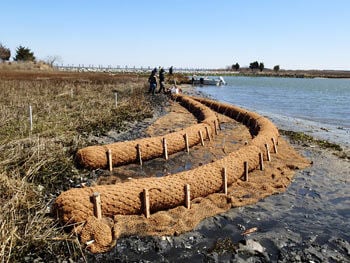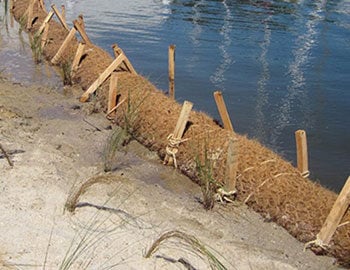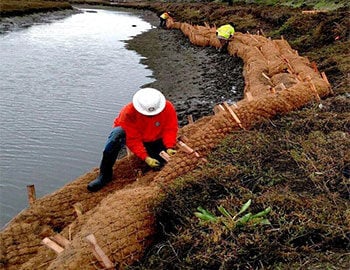Erosion Control with Coir Logs, Mats & Wattles
At One Clarion, we are committed to providing high-quality erosion control mats and wattles designed to stabilize soil, reduce runoff, and support vegetation growth. Our products are vital for protecting vulnerable areas from the impacts of water and wind erosion, ensuring the long-term sustainability and health of your project sites. By choosing One Clarion's erosion control solutions, you invest in reliable and environmentally responsible methods that safeguard your landscapes against erosion and promote ecological balance.
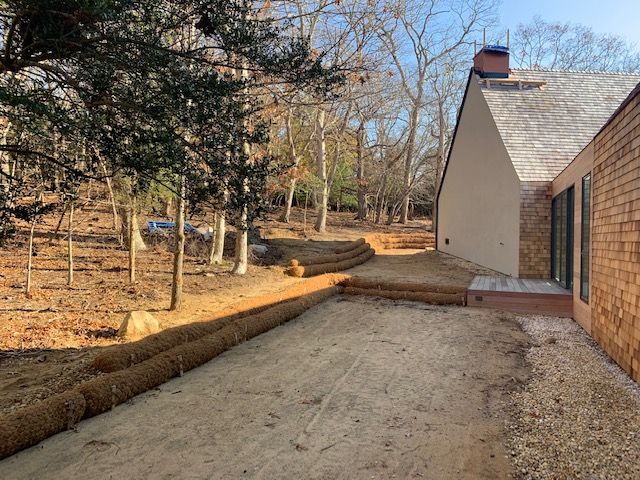
Erosion Control: Coir Mats, Wattles, and Logs
Both erosion control coir mats and coir wattles are essential tools for stabilizing soil and reducing erosion by controlling water runoff and trapping sediments. Made from natural materials, these coir products are designed to protect vulnerable areas such as slopes, construction sites, and stream banks. Erosion control coir mats cover and stabilize exposed soil surfaces, reducing runoff velocity and providing an optimal environment for seed germination and root establishment. Similarly, coir wattles, which are cylindrical bundles filled with coir fibers, are placed in trenches along slopes and contours to intercept water flow and trap sediment, preventing soil erosion. Additionally, coir logs serve as an effective erosion control measure by stabilizing stream banks and shorelines. All these coir products are relatively easy to install and maintain, making them practical and effective solutions for various erosion control applications.
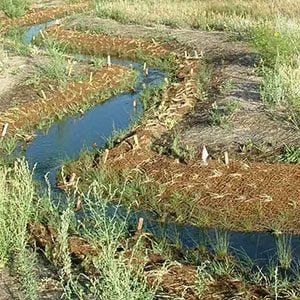
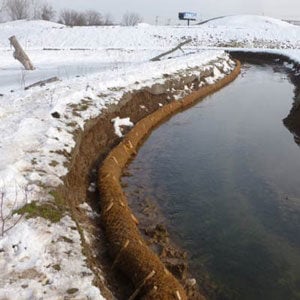
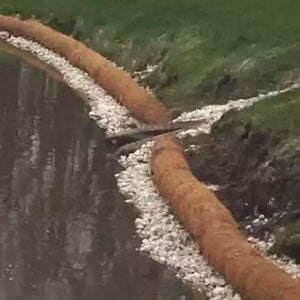
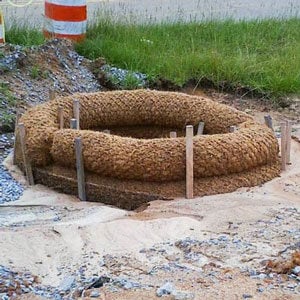
Mats Specifications
- Materials: Available in natural fibers such as coir, straw, jute, or synthetic materials like polypropylene.
- Dimensions: Commonly available in rolls with standard widths of 4 to 8 feet and lengths of 50 to 100 feet.
- Weight: Varies by material, typically ranging from 0.5 to 1.5 pounds per square yard.
- Thickness: Typically 0.25 to 0.75 inches, depending on the material and intended use.
- UV Resistance: Synthetic mats offer high UV resistance, while natural fiber mats are treated for UV stabilization.
- Biodegradability: Natural fiber mats are biodegradable, breaking down over 2-5 years, adding organic matter to the soil.
- Applications: Ideal for slopes, embankments, stream banks, and construction sites for soil stabilization and vegetation support.
Wattles Specifications
- Materials: Made from straw, coir, or excelsior (wood shavings), encased in synthetic or biodegradable netting.
- Diameters: Common diameters include 6 inches, 9 inches, and 12 inches.
- Lengths: Standard lengths are 10 to 25 feet, with custom lengths available upon request.
- Density: Coir wattles are typically available in densities of 7 to 9 pounds per foot.
- Installation: Installed in shallow trenches along slopes, contours, or around construction sites, secured with stakes.
- Lifespan: Straw wattles last 1-2 years, while coir wattles can last up to 3-5 years, depending on environmental conditions.
- Applications: Used for slope stabilization, perimeter control, inlet protection, and sediment trapping.
Mats Installation and Maintenance
Installing coir mat is quick and easy. Clear the area of any debris, such as rocks, branches, or existing vegetation, to ensure the mat can make full contact with the soil. Grade the site to create a smooth surface free of large holes or bumps. When placing the mats, unroll them parallel to the direction of water flow, starting from the top of the slope and working downwards. This orientation helps the mats conform to the soil surface and reduces the risk of water undermining the mat.
Secure the mats with biodegradable stakes or staples, placing them at the edges and center of the mat every 1-2 feet along the perimeter and 3-4 feet in the center. Overlap adjacent mats by at least 4-6 inches to prevent gaps where water could flow through. Finally, backfill the edges with soil to ensure a tight fit and water the area to help the mat settle and adhere to the soil surface.
Maintaining erosion control mats involves regular inspections and proactive measures to ensure their long-term effectiveness. Conduct routine checks, particularly after heavy rainfall or significant water flow, to assess the condition of the mats. Look for any signs of displacement, damage, or areas where the mat is not properly secured. Re-secure any loose sections with additional stakes or staples, and repair or replace damaged areas promptly.
Wattles Installation and Maintenance
Installing wattles begins with preparing the site by clearing away any debris that might interfere with their placement. Dig shallow trenches along the contour of the slope or perimeter of the site where the wattles will be installed. Place the wattles in these trenches, ensuring they fit snugly against the soil. Secure the wattles with stakes driven through the center at regular intervals, typically every 2-3 feet, to anchor them firmly in place.
For added stability, backfill the trenches with soil around the wattles. This helps integrate them with the ground and enhances their effectiveness in controlling erosion and trapping sediment.
Maintaining a regular inspection of the wattles, especially after significant rainfall or water flow, to check for any signs of displacement or damage. Re-secure any loose wattles with additional stakes as needed and replace any that are damaged or degraded. Clear any accumulated sediment or debris from around the wattles to maintain their ability to intercept and slow water flow.
Related Products
Let's Connect
Fill out the form below and we will get back with you within 24 hours. For immediate assistance, call: 863-261-8388 during normal business hours. We offer quick lead-times, and ship across the US and internationally. Fast, affordable shipping from warehouses nationwide.

